How to Really Listen to Your Child: The Art of Conscious Communication

Are you ever busy with a job—like making food or work—when your child comes to tell you a big thing? You nod and say “uh-huh,” but their eyes stay on you. They wait for you to really look at them. That look is a sign. Your child does not just want to talk. They want to be heard. As a Child Development Specialist, I see now that one of the best gifts we can give our kids is our full time and care. To give your time and care is not just to be in the same room. It is to join in with Active Listening Parenting, show you see their feelings, and use what I call Conscious paranting. Here, we will look at how to be the conscious parent. A parent who listens with care, gives kind words back, and builds a life of trust with their child. 1. Listening Is More Than Hearing Hearing just happens. Listening is work. It is to use your ears, eyes, and heart. When your child talks, do you look at them? Do you stop what you do? Do you show that you see how they feel? Like this: “You look very sad your toys fell. That must feel bad.” That is Nonviolent Communication. You show you see their feelings. You do not judge or fix them. This is a key part of mindful parenting. With it, your time and care mean more than being right. Life shows that kids who feel heard have a good hold on their feelings. They can also work out hard things as they grow up. This is called Emotional Regulation. 2. Ask, Don’t Tell When your child tells you a thing—a big thing—you may want to give help or fix it. But most of the time, they just want you to know how they feel. Try to ask questions that need more than a yes or no: This lets them talk more. It helps them find words for their feelings. This is a main part of Holistic Child Development. In Family Meeting times I have led, parents who do this all the time see a big change. Their kids talk more and end fights in a good way. It is also a key rule for conscious co-parenting like we teach at Vedangi Brahmbhatt. 3. Make Times to Talk Some of the best talks can be had in day-to-day life. It can be in the bath, in the car, or when you make food. These are good times for Toddler Activities. You can add set times to check in. One way is to ask for one good thing and one hard thing from the day. These small habits can help all kids share more. They show the benefits of mindful parenting for child development and help kids feel safe. Tip: Make a “listen time” for 5 minutes each day. Your child talks and you just listen. Do not stop them, give help, or do other work. It is a very good thing to do. Real-Time Insight: A new look at life in 2024 shows that homes that use listening and kind talk each day have far less bad ways of acting out. This shows how to implement conscious parenting techniques at home is not just an idea—it brings a very big change. Conclusion: A Tool for Life Kids do not need us to know all the things. They need us to be there for them. To make space for their big questions, what they fear, and their joy. When we use conscious communication, we build trust. We help them feel good about who they are. We help them be strong inside. Parenting Tip: When feelings are big, try to say their words back to them. It shows you love them and are with them. It helps them to keep on with their story. Don’t forget to follow us on Instagram, and YouTube for more on mindful parenting and conscious communication. For the latest news, click here to view our recent press releases.
How to Respond to Your Child’s Big Emotions Without Reacting

If you’re a parent, you’ve probably witnessed the full spectrum of your child’s emotions—tears over the wrong cereal bowl, frustration about bedtime, or anger when asked to share a toy. And in those heated moments, it’s tempting to react. But what if, instead of reacting, we responded with intention? As a Child Development Specialist, I’ve guided hundreds of parents in the U.S. and beyond to embrace mindful parenting—an approach that empowers you to show up with calm even when your child can’t. In this blog, I’ll share how to manage your own triggers and respond thoughtfully to your child’s emotional storms, promoting connection and emotional regulation for both of you. 1. Pause First, React Later It might sound simple, but pausing before responding is one of the most transformative parenting tools. Big emotions often stem from unmet needs, hunger, fatigue, or overstimulation. When a child’s brain is flooded with emotion, they aren’t ready for logic or lectures. They’re looking for safety and connection. As the conscious parent, your job isn’t to fix the emotion—it’s to be a calm presence during it. Try this: Place your hand on your chest when your child is upset and silently count to five. This grounding technique helps regulate your nervous system so you can model calm. 2. Validate, Don’t Minimize Have you ever said, “It’s not a big deal,” only to watch your child’s tantrum escalate? That’s because, to them, it is a big deal. Active Listening Parenting involves reflecting your child’s feelings, even if they seem exaggerated. This is the foundation of Nonviolent Communication—validating without shaming or correcting right away. You’re teaching your child that emotions are okay, and that they are safe to express them. By doing this, you promote emotional regulation kids can internalize for life. 3. Set Boundaries with Empathy Responding with compassion doesn’t mean being permissive. Children thrive on boundaries, especially when set with love. Example: “You’re allowed to be angry, but it’s not okay to hit. Let’s use words or take a break.” This approach aligns with positive discipline strategies for toddlers—teaching without punishment. You’re still the conscious parent, but you’re guiding instead of controlling. Over time, this creates Holistic Child Development, where emotional intelligence grows alongside empathy, communication, and resilience. Real-Time Parenting Insight According to a 2023 report from the American Psychological Association, 70% of parents in the U.S. admit to reacting emotionally during conflicts with their children. However, children whose parents consistently respond with calm and empathy are shown to have higher self-esteem, improved school performance, and better peer relationships. That’s the real power of how to implement conscious parenting techniques at home—it’s not just about the moment; it’s about long-term emotional development. Conclusion: Responding is the New Reacting No parent is perfect—we all have moments when we raise our voices or feel overwhelmed. But each moment of connection is a chance to teach your child that emotions are not something to fear, but something to understand. Tip: Keep a “Feelings Chart” on your fridge. It helps your child identify what they’re feeling, and it gives you a visual cue to help start a calm conversation. Don’t forget to follow us on Instagram, and YouTube for more insights and expertise on raising emotionally intelligent kids. For the latest news and updates, click here to view our recent press releases.
How to Stay Calm When Your Child Is Having a Meltdown
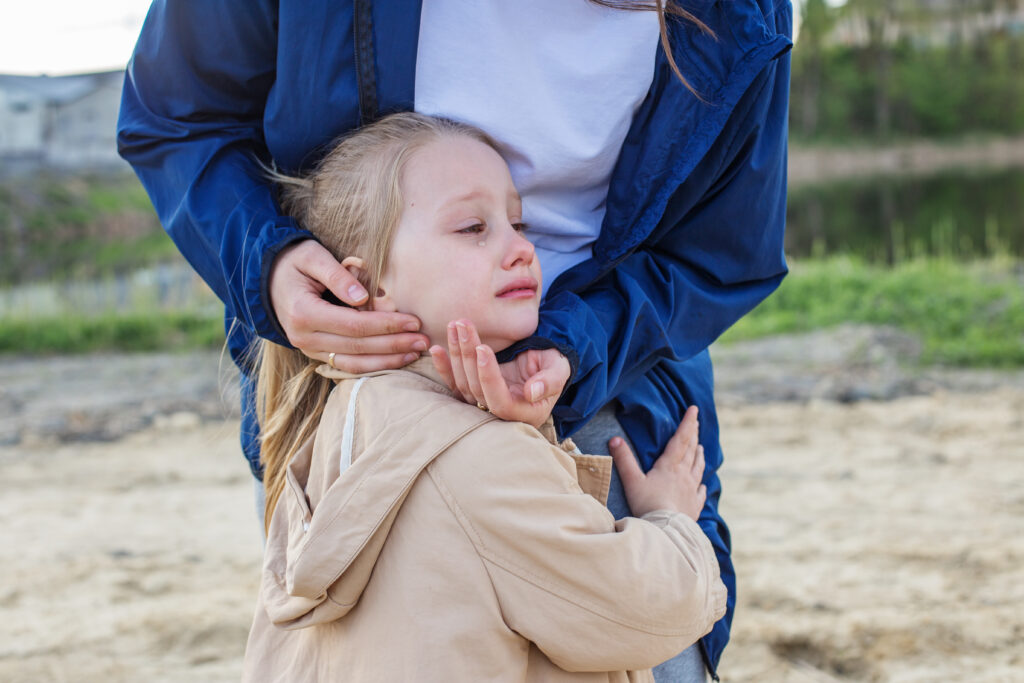
There’s nothing quite as challenging—or humbling—as staying composed when your child is mid-meltdown in the middle of the grocery store. Whether it’s a spilled snack, a denied toy, or “just because,” meltdowns test even the most patient caregivers. But how we respond in these moments matters deeply—not just for our kids, but for our own emotional well-being. As a Child Development Specialist, I’ve seen that these high-stress moments are also powerful opportunities. Opportunities to model emotional regulation, create connection, and embody what it means to be the conscious parent. Let’s talk about how you can stay grounded—even when everything feels like it’s unraveling. 1. Regulate Yourself First: Your Calm Is Contagious Before you can guide your child through their storm, you must anchor yourself. Children subconsciously borrow our nervous systems—if we’re anxious, they escalate. If we stay calm, they begin to regulate. Incorporate mindful parenting techniques like deep breathing or repeating calming mantras such as “My child is having a hard time, not giving me a hard time.” This pause allows you to respond, not react. And yes, it’s okay to take a moment for yourself. Step away briefly (when safe), close your eyes, breathe deep, and ground your feet. You’ll return more present and composed. 2. Empathy Over Explanation When a child is in meltdown mode, logic won’t land. Instead of trying to explain or fix, lean into connection. Get down to their eye level and use Active Listening Parenting tools: “I see you’re really upset. I’m here with you.” This nonjudgmental presence helps your child feel seen and safe. It’s also a practice rooted in Nonviolent Communication, which is key to nurturing trust and co-regulation. Think of these moments as micro Family Meetings—they’re not scheduled, but they’re full of emotional data. They tell you what your child is struggling with, and what they need from you emotionally, not behaviorally. 3. Set Boundaries with Compassion Being calm doesn’t mean being permissive. Children thrive with clear, loving limits. Use positive discipline strategies for toddlers such as “I won’t let you hit, but I’ll help you with those big feelings.” It’s a dance between empathy and boundaries. The goal is to stay connected while guiding. This approach supports Holistic Child Development—meeting their emotional, cognitive, and social needs in the moment. Over time, these small interactions shape your child’s ability to handle frustration, communicate clearly, and develop healthy coping skills. Real-Time Research and Stats According to a 2023 study by the American Psychological Association, children whose parents consistently respond with calmness and connection during emotional outbursts are 60% more likely to develop strong self-regulation skills by age 5. Practicing how to implement conscious parenting techniques at home not only builds emotional safety but also decreases behavioral problems over time. Conclusion: Choose Connection Over Control Parenting isn’t about perfection—it’s about presence. Staying calm during your child’s meltdowns isn’t easy, but it is deeply impactful. Every moment you choose connection over control, empathy over reaction, you lay the foundation for lifelong emotional intelligence. Tip: Create a calm corner at home—a cozy space with soft lighting, favorite books, or sensory items where your child can go to reset when things feel big. Don’t forget to follow us on Instagram, and YouTube for more insights and expertise. For the latest news and updates, click here to view our recent press releases.
Why Your Child’s Behavior Is a Reflection of Your Inner World
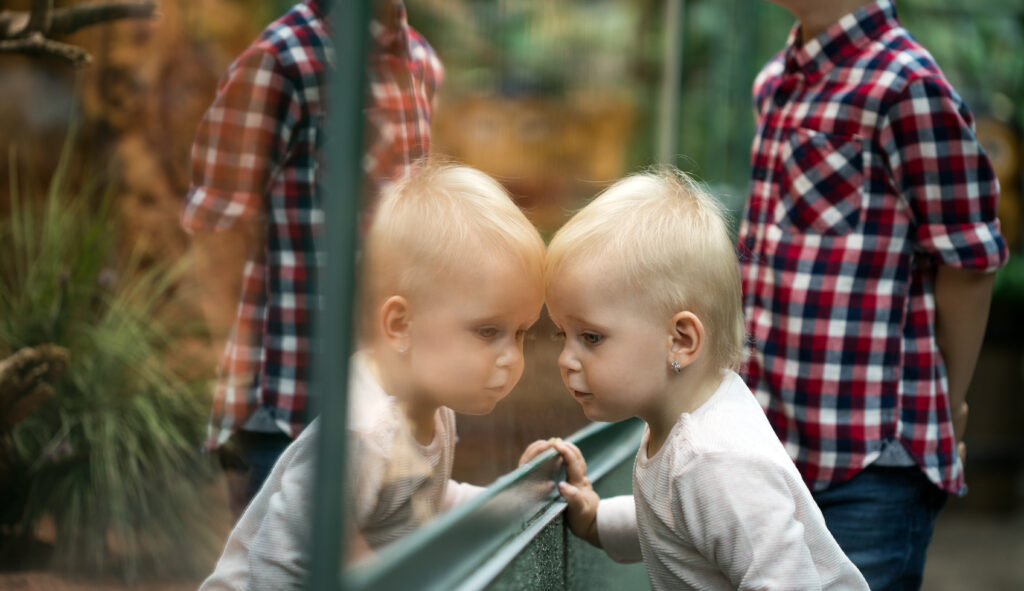
Have you ever noticed your child acting out just as you’re feeling overwhelmed, anxious, or disconnected? It’s not a coincidence. As parents, we are our children’s first environment, and often, their behaviors mirror our internal emotional climate. Understanding this reflection is a cornerstone of mindful parenting—and embracing it can transform your parenting journey into a healing one for both you and your child. As a Child Development Specialist, I’ve worked with countless families navigating this dynamic. The moment a parent begins to turn inward, asking “What is this behavior trying to show me about myself?”, that’s when real breakthroughs happen. Let’s explore how your child’s behavior is a reflection of your inner world—and how you can shift that dynamic with awareness, tools, and compassion. 1. Emotions Are Contagious: Your Calm Is Their Calm Children are incredibly sensitive to emotional energy. If you’re feeling anxious, frustrated, or emotionally unavailable, your child may respond by acting out, withdrawing, or becoming overly clingy. These behaviors aren’t random—they’re responses to an environment they don’t yet know how to verbalize. This is where emotional regulation kids begins—with us. Instead of immediately correcting their behavior, pause and check in with your own body. Are you tense? Distracted? Exhausted? Naming and soothing your own emotion is step one in shifting theirs. This is the benefit of mindful parenting for child development—when we stay grounded, our children feel safer, and their behaviors naturally stabilize. 2. Behavior as Communication: What Are They Really Saying? Behavior is a child’s primary way of communicating unmet needs. If your toddler is throwing tantrums every night at dinner, it might not be about the food—it could be about craving more connection with you. When we take time for intentional connection, such as toddler activities like play-based storytelling or creative expression, we begin to meet those unspoken needs. Tools like Active Listening Parenting can help decode what lies beneath the behavior. Instead of “Why are you being so difficult?”, ask, “What are you trying to tell me right now?” This shift from control to curiosity is what the conscious parent embraces—and it’s often the doorway to healing not just your child’s struggle, but your own childhood echoes as well. 3. Conscious Parenting Changes the Legacy Many of us grew up in homes where emotions were dismissed or discipline meant punishment. But today, parents are empowered to break those cycles. With positive discipline strategies for toddlers, you can set firm, respectful boundaries while preserving emotional connection. For example, saying “I won’t let you hit, but I’m here to help you with your big feelings” teaches both limits and love. And when both caregivers commit to conscious co-parenting, it creates consistency, emotional safety, and powerful modeling for your child. If you’re navigating this with a partner, our Conscious Co-Parenting NJ consultation services are designed to help both of you show up with clarity and unity. Real-Time Insight: The Science Behind the Reflection According to a 2022 study in the Journal of Child Psychology and Psychiatry, children of parents who practice mindful parenting exhibit significantly fewer behavioral issues and higher emotional intelligence. Furthermore, open discussions during regular family meetings foster resilience, communication skills, and mutual understanding within the household. Conclusion: Heal Yourself, Help Your Child Thrive Your child is not trying to give you a hard time—they’re having a hard time. And often, it’s a reflection of our own unspoken emotional landscape. But with curiosity, self-awareness, and a commitment to how to implement conscious parenting techniques at home, you can break old cycles and co-create a more peaceful, connected family experience. Tip: Next time your child acts out, pause and ask: “What’s happening within me right now?” This small moment of reflection can lead to powerful transformation. Don’t forget to follow us on Instagram, and YouTube for more insights and expertise. For the latest news and updates, click here to view our recent press releases.
Breaking Generational Parenting Patterns: A Path to Healing

Parenting is a journey intertwined with chapters from past generations. Many of us unknowingly repeat habits—both loving and limiting—that were passed down to us. From strict discipline to emotional suppression, these generational patterns can cling to us, affecting our children and family legacy. But here’s the hopeful truth: awareness and intentional change can create ripples of healing that enrich generations to come. In this post, we’ll explore three actionable strategies to break these cycles, introducing you to a journey of transformation rooted in mindful parenting and conscious co-parenting. 1. Understand the Roots of Your Patterns Reflect on Family History Begin with self-awareness. Consider your upbringing—were emotions openly expressed, or were they suppressed in favor of stoicism? Did praise pour forth, or did criticism dominate? Identifying these ingrained behaviors helps illuminate the areas needing change. 2. Implement Conscious and Mindful Parenting Practices Once you recognize inherited patterns, intentional change can begin: a. How to implement conscious parenting techniques at home b. Embrace Nonviolent Communication c. Positive direction with positive discipline strategies for toddlers d. Practice benefits of mindful parenting for child development 3. Build a Supportive System Around You Transforming generational patterns doesn’t happen in a vacuum—it thrives with support and guidance. a. Engage with a Child Development Specialist b. Lean into conscious co-parenting c. Equip Yourself with Expert Resources d. Practice Regular Family Meetings Real-Time Impact: What the Research Shows Conclusion Breaking generational parenting patterns is courageous work—but deeply rewarding. By recognizing inherited habits, embracing conscious parenting, and building a supportive framework, you’re not just guiding your child today—you’re setting a generational path of healing. Tip: Start small—dedicate five minutes each evening to discuss highs and lows with your child. Choose empathy, stay curious, and remain present. For more tools to support your journey, don’t forget to follow us on Instagram, and YouTube.For the latest news, research, and expert features, click here to view our recent press releases—and stay empowered on your path as the conscious parent.
How to Raise Emotionally Intelligent Children?
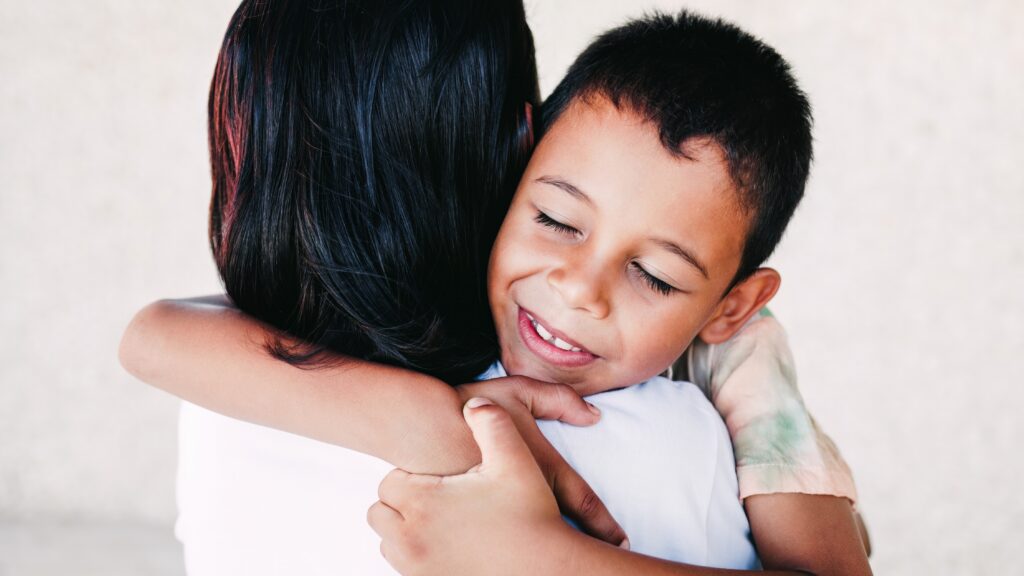
In today’s fast-moving world, being book-smart is no longer enough. What truly sets children up for a successful and fulfilling life is their emotional intelligence—the ability to recognize, understand, and manage their own emotions while empathizing with others. And like any skill, emotional intelligence isn’t something kids are just born with—it’s something they learn. As the conscious parent, raising emotionally intelligent children means prioritizing connection over correction and curiosity over control. It’s about equipping your child with the emotional tools they need to thrive in relationships, school, and eventually, the workplace. Whether you’re parenting toddlers or teenagers, this beginner-friendly guide—grounded in science, compassion, and mindful parenting—will walk you through how to begin nurturing emotional intelligence right from home. 1. Name It to Tame It: Teach Emotional Awareness The first step in raising emotionally intelligent kids is helping them identify and label their emotions. This may seem simple, but many adults still struggle to do this clearly. When we support children in naming their emotions, we give them the power to express, understand, and eventually regulate them. Try this: As child development specialists affirm, emotion labeling activates the thinking brain (prefrontal cortex) and soothes the emotional brain (amygdala). This “name it to tame it” concept helps children feel seen and teaches them that all emotions are valid—even the tough ones. And when your child does open up, respond with active listening parenting—reflect back what you hear without fixing or minimizing. 2. Model Emotional Regulation and Repair Your child learns how to manage emotions not from what you say—but from what you do. That’s why the conscious parent begins with self-awareness. Do you shut down when angry? Raise your voice when overwhelmed? These are teachable moments—not just for your child, but for you. Show them that emotions aren’t something to fear or avoid. How to model regulation: This level of emotional transparency builds trust and safety, especially in families practicing conscious co-parenting. Whether you live under the same roof or are co-parenting across two homes (like the model in Conscious Co-Parenting NJ), consistency in emotional modeling matters. Repairing and reconnecting regularly—especially during family meetings—also fosters holistic child development by teaching children that mistakes don’t define us and that relationships can recover and grow. 3. Encourage Empathy and Problem-Solving Emotional intelligence isn’t just about handling your own emotions—it’s about responding to others with empathy. Start early by helping kids step into someone else’s shoes. When conflicts arise between siblings or friends: You can also practice this skill proactively during role-play, stories, or community experiences. Encourage your child to help a friend in need, donate toys, or comfort someone who is sad. These habits reinforce the benefits of mindful parenting for child development, where compassion becomes second nature. And when they face tough situations—like losing a game, being excluded, or failing a test—support their growth by focusing on solutions rather than blame. Use positive discipline strategies for toddlers and older children to teach boundaries with kindness: Final Thoughts: Raising Hearts as Well as Minds At the end of the day, what we want most for our kids isn’t just that they succeed—but that they feel whole, connected, and confident in who they are. Emotional intelligence is the cornerstone of that wholeness. By raising emotionally intelligent children, we raise future adults who know how to love, lead, listen, and live with integrity. And that starts with us—one conversation, one breath, one moment at a time. At Vedangi Brahmbhatt, we’re here to walk with you on this journey of heart-first parenting. Whether you’re just starting out or already diving into deeper emotional work, remember: you don’t have to be perfect—you just have to be present. Emotional Intelligence Tip: Create a “Feelings Corner” at home—a cozy space with emotion flashcards, sensory toys, calming music, and a journal. It becomes a safe zone for your child to cool off and connect with their feelings. Stay Connected: For more tools, emotional coaching tips, and parenting insights: 👉 Follow us on Instagram, and YouTube For the latest news and updates, click here to view our recent press releases.
The Difference Between Traditional and Conscious Parenting

“Because I said so.” For many of us, those words echo in memory—firm, final, and unquestioned. Traditional parenting, rooted in obedience and authority, has long been the go-to model for raising children. But as our understanding of emotional health, communication, and child psychology evolves, so does the way we parent. Welcome to the world of the conscious parent—a paradigm where empathy, emotional awareness, and presence take center stage. At Vedangi Brahmbhatt, we guide families toward more connected and intentional parenting practices. This article breaks down the core differences between traditional parenting and conscious parenting, helping you decide what resonates best for your family’s journey. 1. Control vs Connection Traditional Parenting: Traditional parenting often operates on a top-down model, where the parent is the authority and the child is expected to obey. Discipline often involves rewards for good behavior and punishments for bad behavior, aiming to manage behavior through external control. This approach can result in compliance—but sometimes at the cost of emotional expression or internalized shame. Conscious Parenting: Conscious parenting shifts the focus from control to connection. Rather than trying to manage a child’s behavior, conscious parents try to understand the emotions beneath the behavior. It’s about addressing the root cause, not just the surface response. By practicing active listening parenting and tuning into your child’s emotional needs, you create a safe, nurturing space where growth happens through mutual understanding—not fear. This style of parenting is deeply aligned with mindful parenting, which prioritizes being present and emotionally responsive rather than reactive. Children raised in this environment are more likely to develop emotional regulation skills, fostering long-term mental wellness. 2. Obedience vs Emotional Awareness Traditional Parenting: In traditional models, a child’s obedience is often viewed as the benchmark for successful parenting. There is an emphasis on respect for authority, often without the same weight placed on understanding emotions or validating the child’s perspective. While structure is important, this approach can sometimes suppress a child’s voice, leaving them less equipped to navigate emotions or advocate for themselves. Conscious Parenting: The conscious parent believes that emotions are information, not problems. Children are encouraged to express their feelings, ask questions, and participate in conversations about limits and consequences. This doesn’t mean a lack of structure—boundaries still exist, but they’re rooted in compassion and communication. Using tools from nonviolent communication, parents teach children how to express needs respectfully while also listening to others. This lays a strong foundation for holistic child development, where emotional intelligence and self-regulation are key outcomes. If you’re co-parenting, embracing conscious co-parenting (like that modeled in Conscious Co-Parenting NJ) ensures that both caregivers support the child’s emotional world consistently—no matter how many households they live in. 3. Behavior Correction vs Inner Growth Traditional Parenting: Traditionally, parenting revolves around shaping a child’s behavior to meet social expectations—be polite, don’t talk back, don’t cry in public. Mistakes are often met with consequences, and success is typically measured by external achievement or compliance. This can create children who are “well-behaved” but who struggle with emotional resilience, self-awareness, or authentic expression. Conscious Parenting: In contrast, conscious parenting sees parenting as a mirror. Children reflect our triggers, our fears, and our unmet needs. Rather than correcting them, we pause to explore what’s coming up in us. By focusing on internal growth and healing, parents model what it means to own mistakes, manage stress, and navigate difficult emotions. This vulnerability invites children to do the same—without fear of rejection or punishment. That’s why practices like family meetings, which encourage open discussion and shared decision-making, are often used in conscious homes. These conversations model accountability, empathy, and healthy conflict resolution. And for younger children, even routine toddler activities—like putting on shoes or sharing toys—become opportunities to teach autonomy and emotional literacy using positive discipline strategies for toddlers. Final Thoughts: It’s Not Either/Or—It’s Evolve and Integrate Traditional parenting gave many of us structure, values, and safety. But conscious parenting builds on that foundation by weaving in emotional intelligence, empathy, and reflection. It’s not about discarding the old—it’s about evolving into something more complete, more connected, and more human. You don’t have to get it perfect. Conscious parenting is not about being calm 100% of the time—it’s about being aware, curious, and willing to grow. And at Vedangi Brahmbhatt, we’re here to walk that journey with you. Parenting Tip: Before correcting your child’s behavior, try this 3-step pause: This brief moment of awareness can turn a power struggle into a breakthrough. Stay Connected: For more insights, tools, and heart-led parenting content: 👉 Follow us on Instagram, and YouTube For the latest news and updates, click here to view our recent press releases.
What Is Conscious Parenting? A Beginner’s Guide
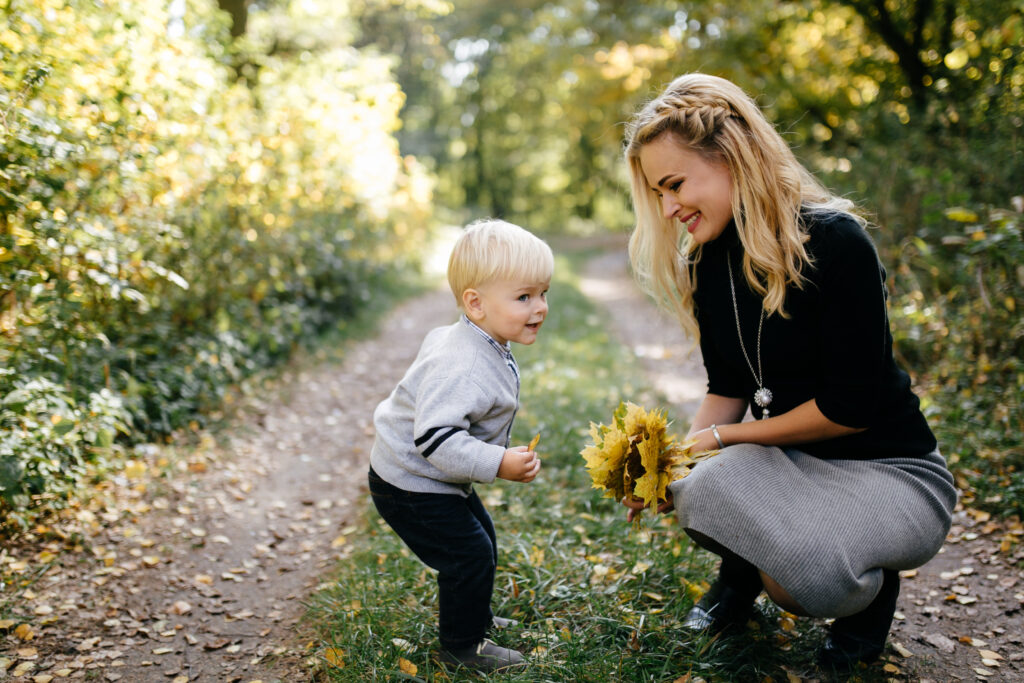
Parenting is one of life’s most beautiful—and challenging—journeys. Yet, many of us step into it without a roadmap. We may fall back on the way we were raised or react out of frustration, often wondering, “Am I doing this right?” At Vedangi Brahmbhatt, we believe that parenting isn’t just about raising children—it’s about raising ourselves in the process. Becoming the conscious parent means intentionally showing up in your relationship with your child, not just to teach them—but to grow with them. In this beginner’s guide, we’ll walk you through the foundations of conscious parenting, why it matters, and how to begin applying it in your own family. Whether you’re the parent of toddlers or teens, this gentle, present-focused approach offers lasting tools for connection, healing, and transformation. 1. What Is Conscious Parenting? At its core, conscious parenting is about being emotionally aware, present, and intentional in your relationship with your child. Rather than seeking to control behavior through punishment or reward, the conscious parent focuses on understanding what drives behavior, and how their own emotions play a role in shaping responses. Unlike traditional parenting models, conscious parenting emphasizes: This approach is deeply tied to mindful parenting, where awareness of your child’s needs begins with awareness of your own inner world. As any child development specialist will tell you, children don’t need perfect parents—they need present ones. This is also where nonviolent communication becomes a powerful tool, helping parents and children communicate in a way that prioritizes empathy, needs, and connection over conflict. 2. Why Conscious Parenting Works In today’s fast-paced, achievement-driven world, children face immense pressure. Conscious parenting offers an antidote: safety, presence, and empathy. Here are three powerful benefits of conscious parenting: A. Strengthens Emotional Intelligence When you respond instead of react, your child learns that emotions are safe and manageable. Over time, this builds emotional regulation kids need to succeed in relationships, academics, and life. Even during toddler activities, how we respond to meltdowns—through grounding, soothing, and curiosity—affects how a child learns to process their own feelings. B. Deepens Parent-Child Connection Conscious parenting shifts the dynamic from “power over” to “relationship with.” This creates open channels of trust and respect. In fact, using active listening parenting strengthens this connection, allowing children to feel heard, seen, and supported—even when boundaries are needed. C. Encourages Growth for Both Parent and Child One of the most profound aspects of conscious parenting is that the work begins with us. When we pause to reflect on our own triggers, reactions, and inherited patterns, we begin to heal. This growth enables us to break generational cycles and model healthier behaviors for our children. Whether you’re learning how to respond with empathy, building new bedtime routines, or engaging in weekly family meetings, this process leads to true holistic child development—and self-development. 3. How to Begin Conscious Parenting at Home You don’t need a perfect home environment or years of training to start this journey. Conscious parenting begins in small, mindful steps. Here’s how: A. Practice Awareness Before Action Before correcting behavior, ask yourself: B. Create Safe Spaces for Dialogue Start a family meeting tradition, even if it’s just 10 minutes once a week. Use this time for emotional check-ins, gratitude sharing, or playful discussions. It creates a foundation of trust and collaboration. C. Use Positive Discipline with Compassion Discipline in conscious parenting isn’t about control—it’s about guidance. Use positive discipline strategies for toddlers and older children that focus on solutions instead of shame: These approaches reflect how to implement conscious parenting techniques at home, helping kids learn accountability in a safe, supported way. D. Prioritize Connection Over Perfection Your child doesn’t need you to be flawless. They need you to show up with presence, admit when you make mistakes, and repair when things break. If you’re navigating parenting with a partner or co-parent, conscious co-parenting tools (like those explored in Conscious Co-Parenting NJ) can help maintain consistency, reduce conflict, and protect emotional safety across two households. Final Thoughts: Conscious Parenting Is a Journey, Not a Destination You don’t have to have all the answers today. Conscious parenting is not a rulebook—it’s a relationship. It’s about learning, unlearning, and showing up with intention, again and again. At Vedangi Brahmbhatt, we’re committed to supporting your journey as the conscious parent. Whether you’re just getting started or ready to deepen your practice, remember: every moment of presence is progress. You have the power to raise connected, compassionate, emotionally resilient humans—starting with how you show up today. Tip of the Day: Next time you feel triggered, pause and say out loud, “I need a moment to think.” This teaches your child that emotional regulation is a strength—not a shutdown. Stay Connected: For tools, videos, and conscious parenting inspiration: 👉 Follow us on Instagram, and YouTube For the latest news and updates, click here to view our recent press releases.
Spare Me: Teaching Your Kids to Change a Tire
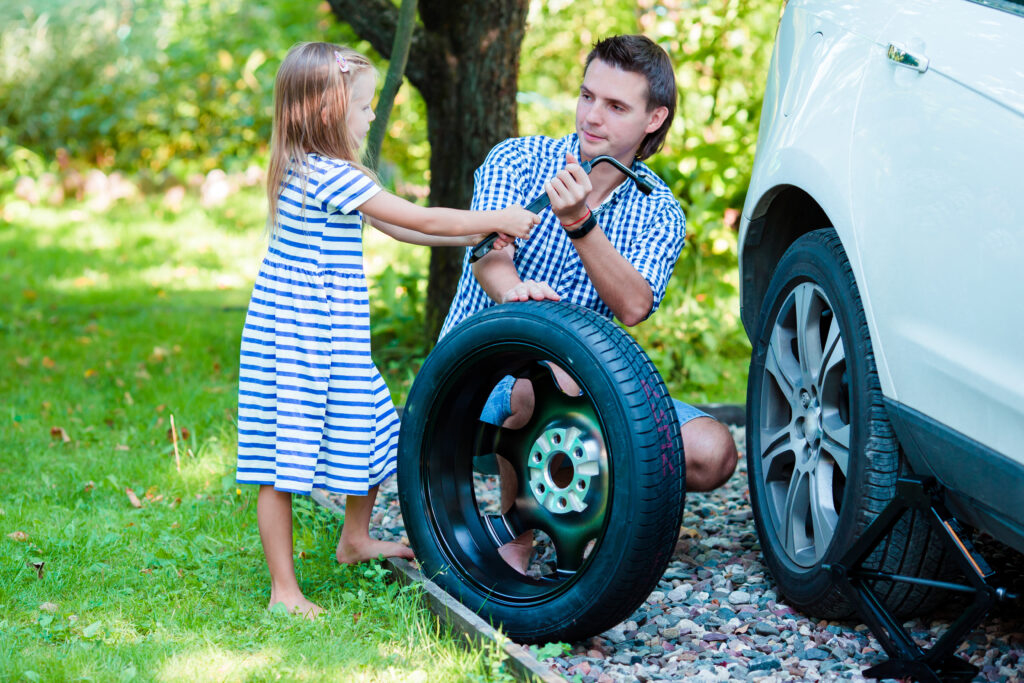
There’s something empowering about knowing how to solve a problem when life throws you a curveball—or in this case, a flat tire. Changing a tire may not be something taught in most schools, but it’s a life skill every young adult should have in their toolbox. Whether it’s your teen heading out for their first solo drive or your preteen tagging along on errands, showing them how to change a tire is about more than tools and technique. It’s about building confidence, responsibility, and self-reliance—core values we nurture as the conscious parent. In this post, we’ll guide you through how to teach this essential skill while embedding it into a mindful parenting framework, encouraging hands-on learning, emotional regulation, and long-term resilience. 1. Start With the Why: Empowerment Through Real-World Readiness Before you even pop the trunk, talk to your child about why this skill matters. Teens, especially, are more likely to engage when they understand the relevance. This is also a chance to spark a deeper conversation around safety, self-reliance, and being a prepared adult. Consider using active listening parenting to ask: You’re not just teaching a task—you’re modeling how to approach life with calm, clarity, and confidence. These are skills rooted in holistic child development, and they’re just as valuable in the garage as in the classroom. If your parenting journey includes conscious co-parenting, consider collaborating with your co-parent to ensure your teen gets equal opportunities to learn life skills from both households—consistency in these teachings reinforces responsibility across the board. 2. Turn Tire Changing Into a Teachable Moment Once your child understands why it matters, make the lesson hands-on. Teens retain more when they physically do the task themselves. Choose a safe environment—like your driveway or a quiet parking lot—and walk through the steps together: Step-by-Step Breakdown: Use the opportunity to build your child’s mechanical vocabulary, boost problem-solving confidence, and reinforce composure under pressure. It’s the perfect application of how to implement conscious parenting techniques at home—teaching responsibility through active participation, not lectures. Pro tip: Practice this as a family. Make it part of a weekend “life skills day” alongside other activities like budgeting, grocery shopping, or laundry folding—especially if you’re still in the stage of guiding through toddler activities. This normalizes learning and cooperation across all ages. 3. Normalize Mistakes and Celebrate Growth Chances are, your child might drop a lug nut, struggle to position the jack, or feel nervous about the process—and that’s okay. Instead of jumping in with correction, pause and use nonviolent communication and validation: When you frame the experience as a safe space to make mistakes and learn, you activate the benefits of mindful parenting for child development—resilience, grit, and an internal sense of capability. Celebrate their effort more than the outcome. Whether they master it on the first try or fumble their way through, what matters is that they tried. This approach reinforces emotional safety, confidence, and the idea that they’re never alone in learning new things. If your family uses family meetings, bring up the topic afterward. Ask your teen what they learned, how they felt, and what they’d want to teach someone else about the process. These conversations reinforce skill retention and encourage reflection. Final Thoughts: Tools, Trust & Tire Changes Raising capable, confident kids isn’t just about teaching them algebra or packing the perfect lunchbox. It’s about giving them the tools to face real life—even if that life looks like a flat tire on a rainy road someday. As the conscious parent, when you create time for practical skills like changing a tire, you’re instilling much more than a mechanical routine. You’re passing down empowerment, independence, and calm under pressure. So the next time your teen heads out for a drive, you’ll both know: they’ve got this. Tip of the Day: Keep a laminated step-by-step tire change guide in the glove compartment. Include a flashlight, gloves, and a small towel in the trunk to make the process easier, especially at night. Stay Connected: Want more content on raising independent, emotionally intelligent kids through practical skills? 👉 Follow us on Instagram, and YouTube For the latest news and updates, click here to view our recent press releases.
The Children on the Bus Go… How to Prepare Your Kids for the World of Bus Riding
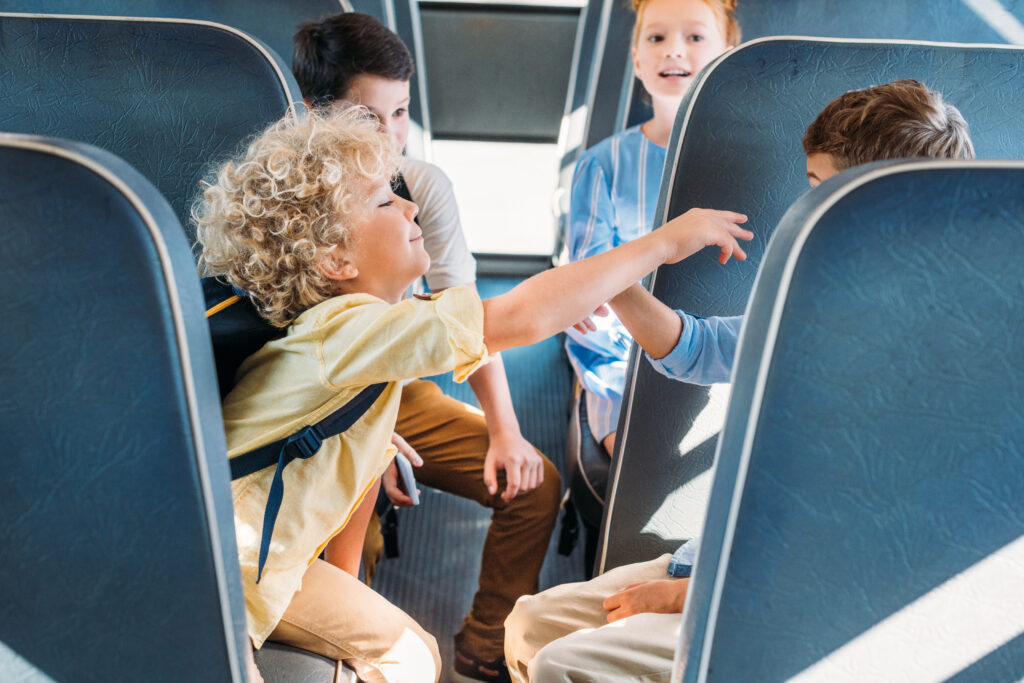
The first time your child climbs onto a school or city bus without you, it feels like a major milestone—and for good reason. Whether it’s a yellow school bus rolling through your neighborhood or a public transit ride to a summer camp, learning to navigate the bus system is an important step toward independence. As the conscious parent, your goal isn’t just to make sure your child knows where to sit. It’s to equip them with the emotional, social, and practical skills they need to ride with confidence, courtesy, and safety. In this post, we’ll explore how to prepare kids of all ages for the world of bus riding using tools from mindful parenting, trauma-informed guidance, and practical strategies supported by child development specialists. 1. Start With Basics: Safety, Structure & Predictability Before anything else, your child needs to know what to expect. The bus can be noisy, crowded, and overstimulating—especially for younger children who thrive on routine and predictability. Help your child feel secure by: For toddlers or early school-age children, consider using role-play as a toddler activity to act out bus scenarios. Pretend to be the driver or another passenger and practice polite phrases like: These early lessons help build social confidence and are supported by the benefits of mindful parenting for child development, where experiences are scaffolded step-by-step, helping kids build trust in themselves and their environment. 2. Foster Emotional Readiness Through Connection Even older children may feel nervous about taking the bus alone. This is where emotional regulation kids learn at home plays a critical role. A child who knows how to identify and name their feelings is more likely to ask for help when they need it. Use active listening parenting before and after the first few rides: Normalize the full range of experiences. If something didn’t feel right—maybe someone said something unkind or they felt overwhelmed by the noise—validate those emotions without judgment. You can also bring this up during a regular family meeting, where each member shares highs and lows of the week. This safe space helps kids develop trust and emotional vocabulary, which can be invaluable in unpredictable social settings like a school bus. And if you’re navigating two households, conscious co-parenting practices like consistent communication and shared expectations (as modeled by Conscious Co-Parenting NJ) can help reduce confusion or stress for kids riding different buses on different days. 3. Equip Them With Practical Tools & Social Awareness While the bus is a great place to gain independence, it’s also a mini society. Your child needs to learn more than just logistics—they need to know how to be a good bus citizen. Teach them: Using techniques from nonviolent communication, practice how to speak assertively but kindly. For example: You’re not just raising a child who can get from point A to point B. You’re raising a human who knows how to respect others, communicate clearly, and act responsibly. This approach also echoes how to implement conscious parenting techniques at home, by guiding your child to reflect on choices and consequences—not through control, but through collaboration and learning. Final Thoughts: The Ride Is as Important as the Destination Preparing your child for the world of bus riding is about more than logistics. It’s about trust, confidence, and connection. When you blend practical prep with emotional support, you’re not just sending your child onto a bus—you’re helping them step into the world with readiness and resilience. As a parent or caregiver, these everyday transitions are opportunities to model grace, kindness, and problem-solving. It’s one more way to lean into your role as the conscious parent, helping your child grow in both freedom and responsibility. Bus Tip of the Day Pack a “bus comfort kit” with your child: a small book, tissues, mints, a worry stone, or a calming fidget. These simple items can make a big difference during longer or stressful rides. Stay Connected: Want more guidance on school transitions, child confidence, or emotional resilience? 👉 Follow us on Instagram, and YouTube For the latest news and updates, click here to view our recent press releases.

